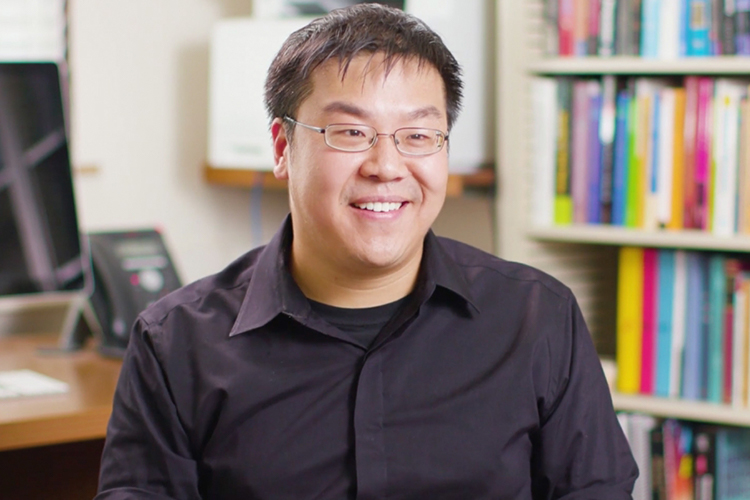New Packard Fellow leverages time crystals to improve quantum measurement
Physicist Norman Yao will use fellowship's unrestricted funds to explore applications of his breakthrough discovery, time crystals

October 19, 2018
New Packard Fellow Norman Yao discusses his research and how he got interested in physics
Two years ago, Norman Yao made a big splash by showing physicists how to create a unique material — a time crystal — that reimagines the idea of flashy diamonds and emeralds.
Whereas crystalline gems are made up of atoms repeating in space, time crystals repeat in time, returning periodically to the same state.
That breakthrough helped Yao, a UC Berkeley assistant professor of physics, garner a hefty fellowship from the Packard Foundation — $875,000 over five years — to pursue whatever research he wants.
The award, announced this week, will allow him to tackle new ideas generalizing the concept of time crystals to other non-equilibrium phases of matter.
Yao was among 18 early-career scientists and engineers to be awarded fellowships this year, according to an announcement this week from the foundation.
“It really is amazing to see what brilliant researchers can do when given the room to take big risks,” said Frances Arnold, the chair of the Packard Fellowships Advisory Panel, the 2018 Nobel Laureate in Chemistry and a former Packard Fellow at Caltech, where she landed after completing her doctoral studies at UC Berkeley. “And I’m not only talking about their impressive contributions to their fields — I’m also talking about building entirely new disciplines and giving back to the next generation of scientists. I’m excited to see what’s in store for this new class as it joins our welcoming community of fellows.”
Yao and his theory group at UC Berkeley employ a variety of theoretical, numerical and experimental tools to investigate new phenomena in quantum systems that are far from thermal equilibrium, such as time crystals.
“One place where I see a glimmer of hope to use time crystals is along the lines of metrology, that is, combining the periodic driving that underlies time crystals with quantum interactions to enable measurements that are more precise than possible today,” he said.
His long-term goal is to establish a new field in quantum physics that will enable the prediction and discovery of novel forms of quantum matter whose pattern formation fundamentally requires an interplay between time and spatial dimensions.
Yao credits his success to the many and diverse interdisciplinary scientists he has met while at UC Berkeley, including during his three years as a Miller Postdoctoral Fellow.
“These types of connections breed new ideas, and the fellowship’s flexibility enables one to explore them,” he said. “I’ve been lucky enough to experience the importance of such connections firsthand at Berkeley.”